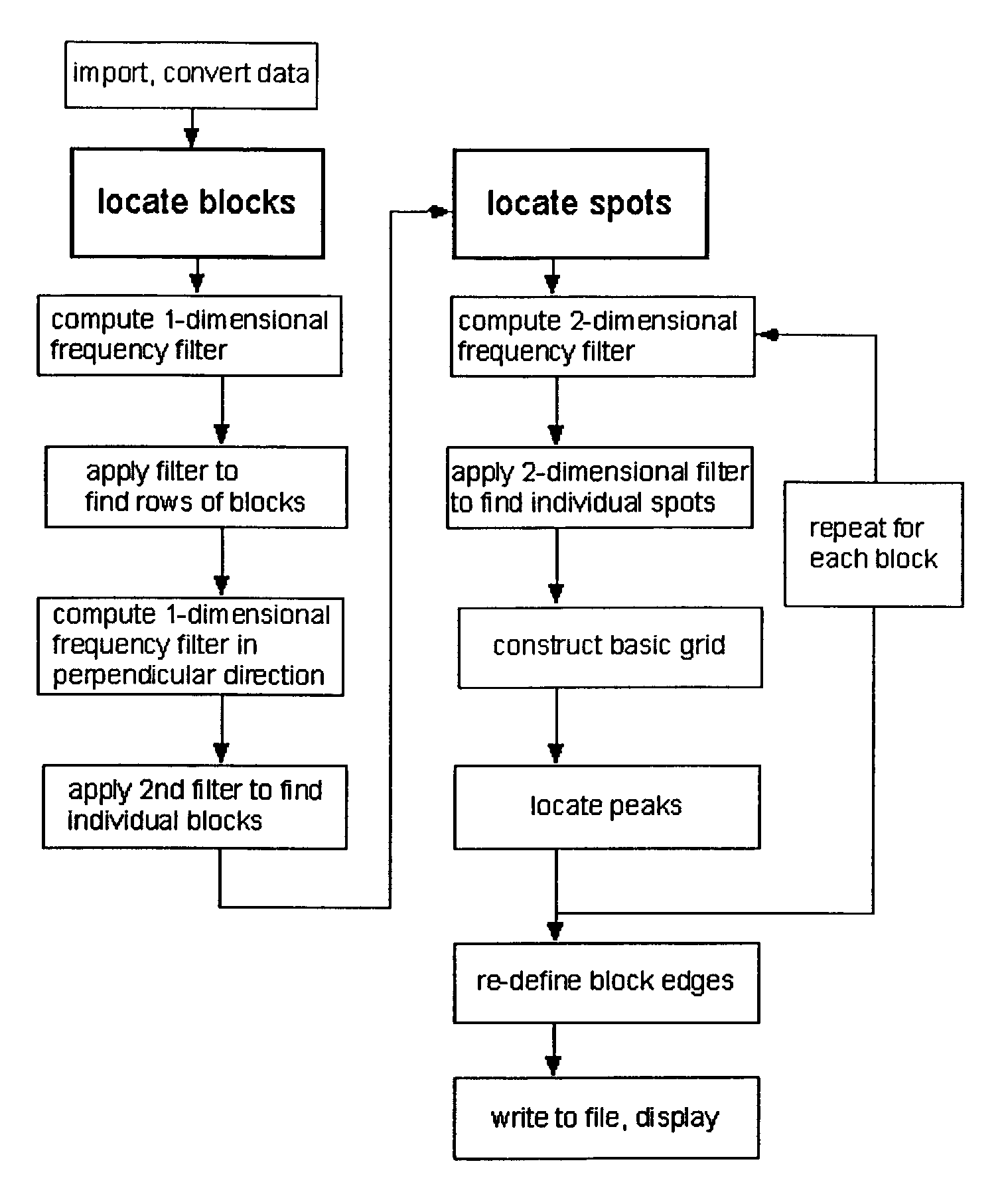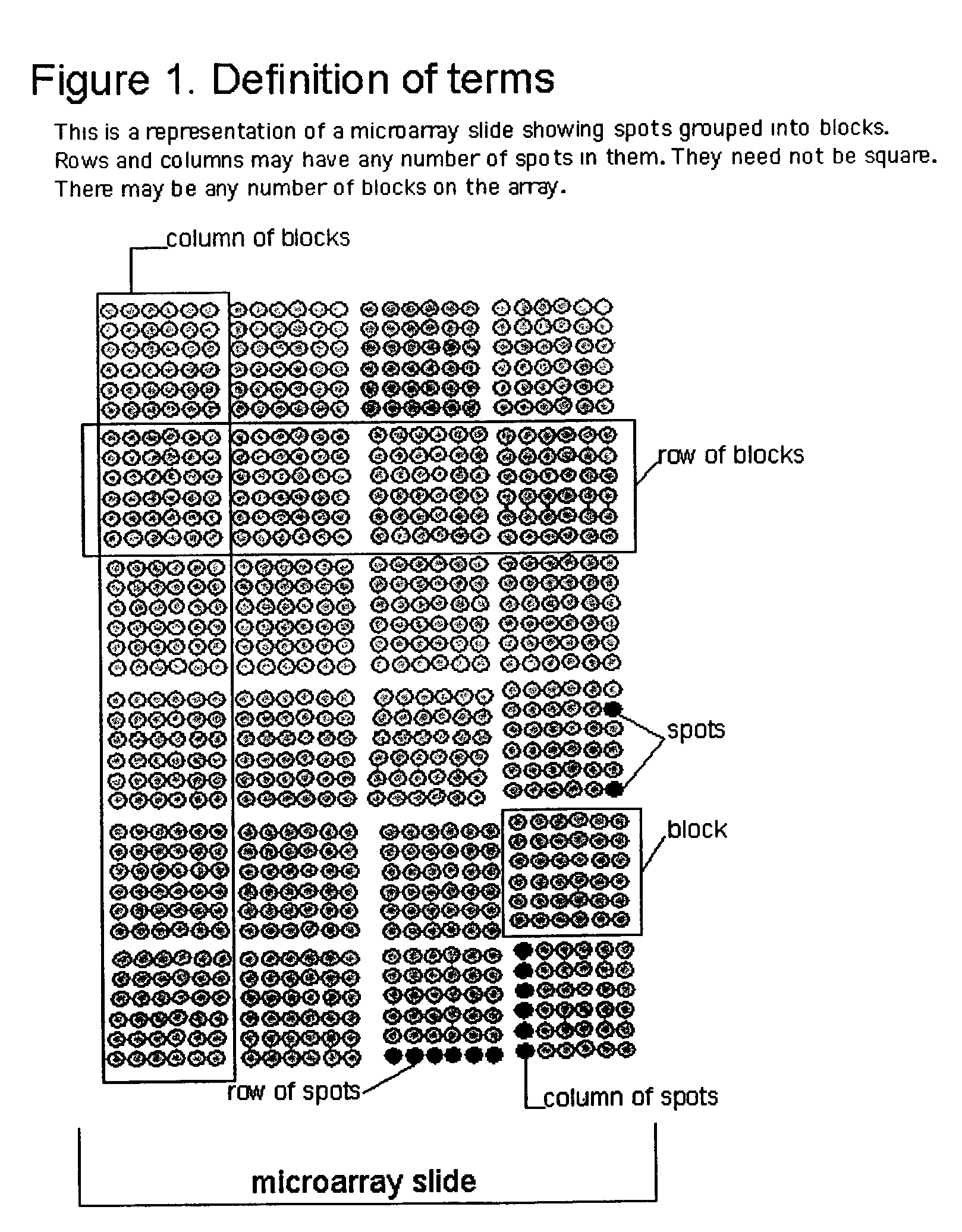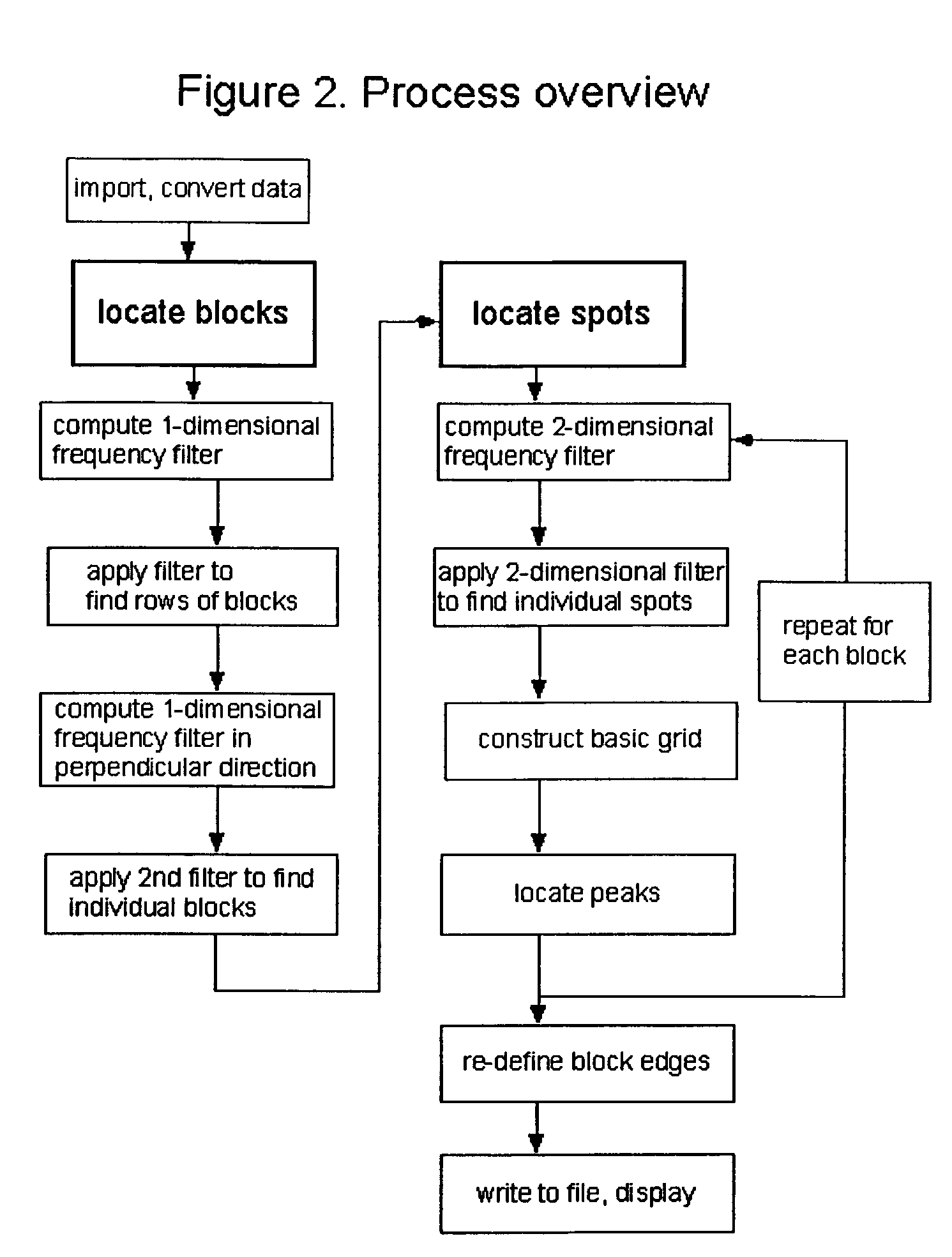Method, system, and computer code for finding spots defined in biological microarrays
a biological microarray and spot detection technology, applied in the field of biological microarray data processing techniques, can solve the problems of difficult to obtain information or be slightly (or considerably) inaccurate, and the manufacture of spotted arrays does not produce perfect rectilinear arrays, and achieves a broader range of applicability.
- Summary
- Abstract
- Description
- Claims
- Application Information
AI Technical Summary
Benefits of technology
Problems solved by technology
Method used
Image
Examples
Embodiment Construction
[0032]According to the present invention, techniques for processing of biological microarrays are provided. More particularly, the invention provides one or more methods for identifying areas on images of a mechanically printed or otherwise generated array of spots which contain data, and those which are background areas. Merely by way of example the invention is applied to images of spots making up DNA microarrays. Such spots on the DNA microarray itself contain active regions of immobilized nucleic acids, which may be treated or otherwise, located within inactive areas, or background regions. But it would be recognized that the methods of the invention are useful for the analysis of digitized images from any type of readout signal generated from arrays of any class of molecules, cells, or tissues in which there are areas of data and of background, and where data-containing areas lie in an approximately regular grid. Data from arrays of other classes of nucleic acids, of proteins, ...
PUM
 Login to View More
Login to View More Abstract
Description
Claims
Application Information
 Login to View More
Login to View More - R&D
- Intellectual Property
- Life Sciences
- Materials
- Tech Scout
- Unparalleled Data Quality
- Higher Quality Content
- 60% Fewer Hallucinations
Browse by: Latest US Patents, China's latest patents, Technical Efficacy Thesaurus, Application Domain, Technology Topic, Popular Technical Reports.
© 2025 PatSnap. All rights reserved.Legal|Privacy policy|Modern Slavery Act Transparency Statement|Sitemap|About US| Contact US: help@patsnap.com



